What does the number 10 role mean in football? The number 10 shirt is typically reserved for the most creative and talented players, often deployed as an attacking midfielder or playmaker. This role is vital in linking the midfield with the attack and is responsible for creating chances and assisting goalscorers. Traditionally, the number 10 operates in a central position, just behind the strikers, in an area known as the "hole," where they can move and create opportunities freely. With a unique combination of vision, technique, and tactical awareness, players in this role are expected to decide games, unlock defenses, and significantly influence outcomes. This article from Wintips will help you have a clearer view of the number 10 in football.
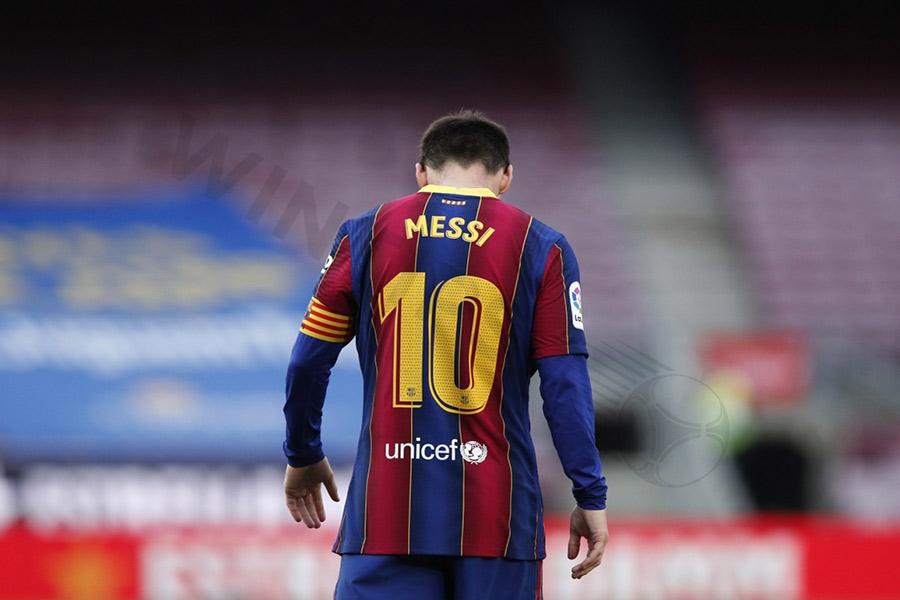
What position do number 10s usually play?
In football, the number 10 shirt carries a special significance. It is often given to the team’s most creative and talented players, typically occupying the attacking midfielder or playmaker role. Tasked with creating chances and setting up goals, the number 10 is integral to the team's attacking strategy.
Traditionally, the number 10 operates in the middle of the pitch, just behind the center forward. This area, often called the "hole" or "pocket," allows the player to receive the ball and dictate play freely. Acting as a link between the midfield and the attack, they make runs and deliver key passes that break through defenses.
Over time, the role of the number 10 has evolved. Some teams now forego a traditional center forward, relying on the number 10 to lead the attack. In such cases, these players are often referred to as "false nines," blending creativity and scoring ability to great effect.
To excel in this role, a number 10 must possess exceptional technical skills, vision, and creativity. These players are expected to dribble past defenders, make incisive passes, and score decisive goals. Additionally, they require a deep understanding of the game, sharp tactical awareness, and the ability to make split-second decisions that can change the course of a match.
What is the number 10 role in football?
The No. 10 position is one of the most important in football. It involves playing the role of an attacking midfielder or playmaker. The No. 10 is responsible for creating chances and assisting players in scoring goals while also linking the midfield and attack. With vision and creativity, they can change the game with breakthrough moves.
The No. 10 is often considered the "brain" of the team. It needs to understand tactics, read teammates' and opponents' movements, and make quick decisions. Technique, vision, and creativity are indispensable qualities. Sharp passes or deft dribbles help them exploit gaps in the opposition's defense.
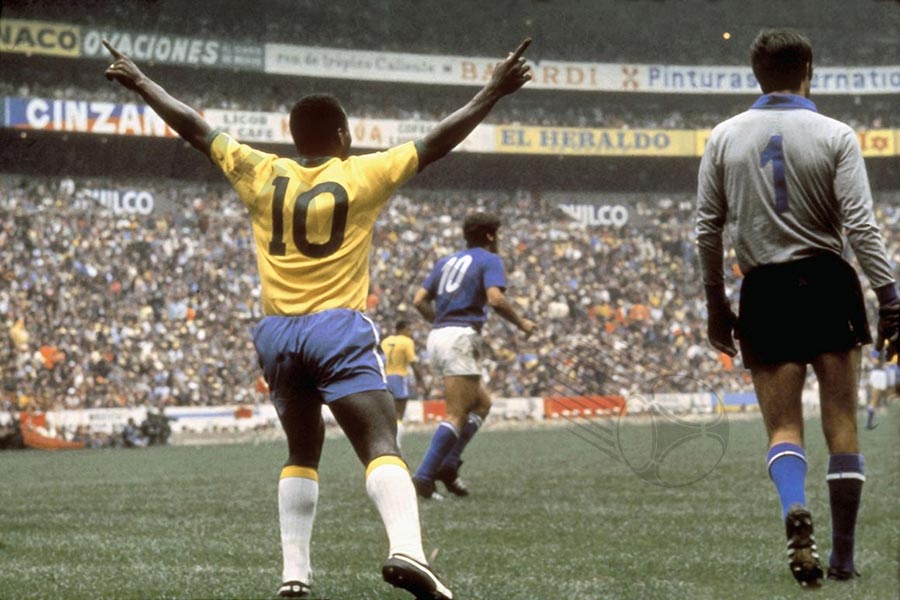
Good No. 10s are mentally strong, perform well under pressure, and they take on a leadership role on the pitch. They guide their teammates, inspire, and set the tempo of the game. Legendary players such as Diego Maradona, Lionel Messi, and Pelé have made their mark in this position, demonstrating exceptional talent and far-reaching influence.
In addition to creating goals, number 10s also contribute to the goal-scoring effort with decisive shots. To be successful, they need tactical acumen, the ability to read the game, and making the right decisions in each situation. This position requires not only skill but also leadership, playing an important role in the team's success.
Why number 10 is special?
Why is the number 10 special? The history of the number 10 shirt in football dates back to the 1950s, when Brazilian legend Pelé first wore the number. Since then, many great names such as Diego Maradona, Lionel Messi, Ronaldinho, and Zinedine Zidane have made this position famous. They set the standard for the playmaker role and contributed significantly to football's evolution.
The number 10—often referred to as a "center forward" or "false nine"—not only creates but also scores goals. The typical requirements of this position are sharp vision, accurate passing ability, skillful dribbling, and powerful long-range shots.
In addition to technique, number 10s need outstanding intelligence and quick decision-making. They have to read situations and predict the movements of teammates and opponents to create scoring opportunities. Their leadership role on the pitch makes them an inspiration and role model for the whole team.
For young players, the No. 10 is a dream role. Success in this position requires mastering dribbling, passing, and finishing skills, along with tactical acumen and decisiveness.
For coaches, identifying and nurturing potential No. 10s is crucial. Encouraging their creativity and providing development opportunities will help them reach their full potential and become vital assets to the team.
If you're new to sports betting, it's important to follow reliable betting tips to increase your chances of success
Top number 10 football players
1. Pele
Before the Ronaldo vs Messi debate, there was the Pele vs Maradona debate. Both players wore the number 10 shirt, and Pele took the top spot, with Messi sandwiched in between.
Brazilian football was synonymous with flair and success, largely thanks to Pelé. His dribbling, creativity, and teamwork revolutionized the game. Pelé could score from anywhere and help his team dominate matches. He played in an era when tackling was more aggressive, and pitches were far below today's standards.
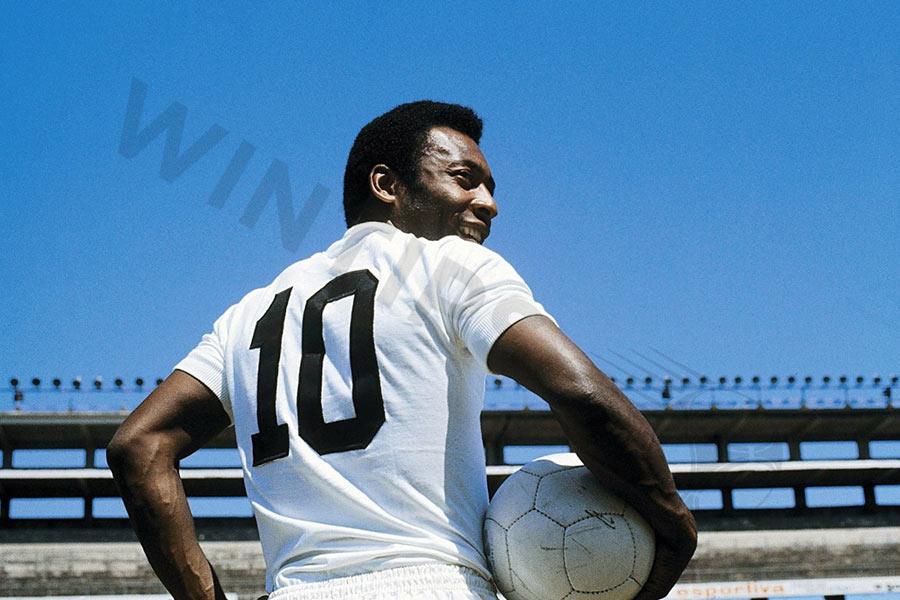
He played in his first World Cup in 1958 at the age of 17. Scoring six goals in the tournament, he helped his country win the trophy for the first time. Four years later, Brazil won it again, although Pele missed the final due to injury. In 1970, he was part of the famous Brazilian team that was considered one of the best teams in football history. He won three of the four World Cups he participated in. Brazil had to wait another 24 years for their next victory after Pele retired from international football in 1971.
2. Lionel Messi
The debate in football about whether Messi or Cristiano Ronaldo is better has lasted for years. Since Ronaldo has worn the number seven shirt for most of his career, we don’t need to delve into that debate here, fortunately.
Messi is one of the most complete footballers ever. He dribbles the ball like it's glued to his foot. His goalscoring record is phenomenal, and his vision and passing accuracy are on par with the best. He was Barcelona's star player for years, during which the team dominated both Spain and Europe.
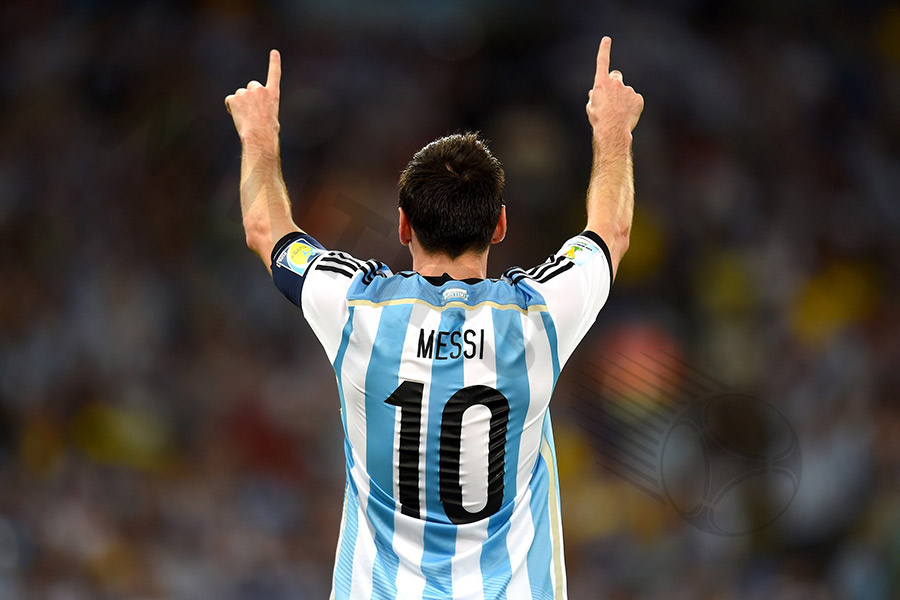
Messi has won just about everything available to win in football—including eight Ballon d'Or awards. His ability as both a playmaker and a goalscorer stands out from most players. With 738 goals and 396 assists throughout his career so far, Messi has reached unbelievable heights in football.
3. Diego Maradona
One of football's most divisive figures, Diego Maradona will always be remembered for his incredible dribbling ability, capable of making defenders look foolish. After scoring the controversial 'Hand of God' goal against England at the 1986 World Cup, he demonstrated his brilliance with the ball merely four minutes later. He wove past a swarm of defenders and then goalkeeper Peter Shilton, completing an incredible solo run from his half to double Argentina's lead. With his handball for the first goal and his sheer brilliance for the second against England, Maradona displayed two contrasting sides of his game within a few minutes.
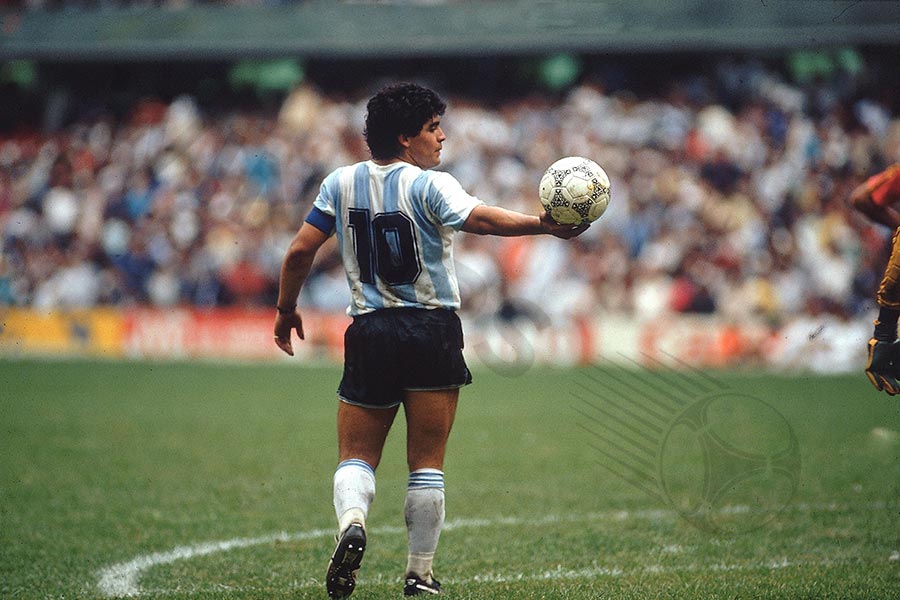
He is an icon in Argentina, his native country, and in Naples, where he spent most of his club career. Maradona won two Serie A titles, along with a Coppa Italia, Supercoppa Italiana, and UEFA Cup with Napoli. Napoli waited 33 years to claim another league title, which they finally achieved in 2023.
4. Michel Platini
Michel Platini set the standard for future generations of French playmakers. Zinedine Zidane was inspired by his compatriot. Both followed similar career paths, captaining France and playing for Juventus.
Platini was a resilient player, adept at winning the ball both in the air and on the ground. He had the vision to pick the perfect pass to unlock any defense and the foresight to anticipate plays.
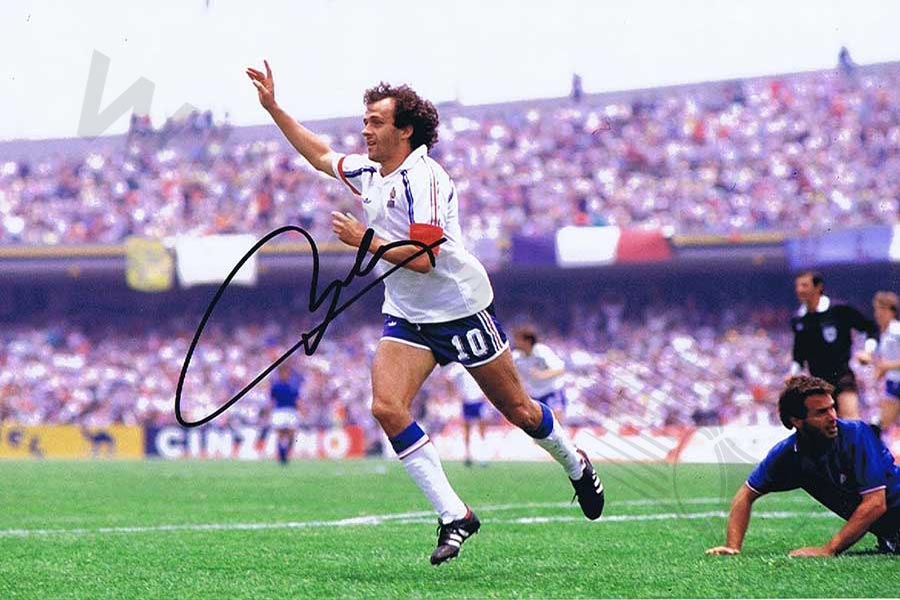
The France captain scored nine goals in five games at Euro 1984, leading his country to their first international title through an inspired performance. At the peak of his career, Platini also guided France to a third-place finish at the 1986 World Cup. France had struggled to qualify for tournaments early in Platini's international career, making this success a significant turning point in the nation's football history. Platini held the title of all-time leading goalscorer for the French national team with 41 goals. This record stood until Thierry Henry surpassed it in 2007.
5. Ferenc Puskas
Ferenc Puskas, widely regarded as one of the most prolific strikers in football history, formed a brilliant partnership with Alfredo Di Stefano at Real Madrid. The duo frequently competed to outscore each other, as showcased in the 1960 European Cup final, which ended in a 7-3 victory over Eintracht Frankfurt. In that match, Di Stefano scored a hat-trick, but Puskas outshone him with an incredible four goals. This performance was a testament to Puskas' prolific nature, as he went on to score an astonishing 512 goals in just 528 matches during his career. Puskas was not your typical footballer; he had a stocky build and relied almost exclusively on his left foot. However, his incredible goalscoring record demonstrated just how exceptional that left foot was.
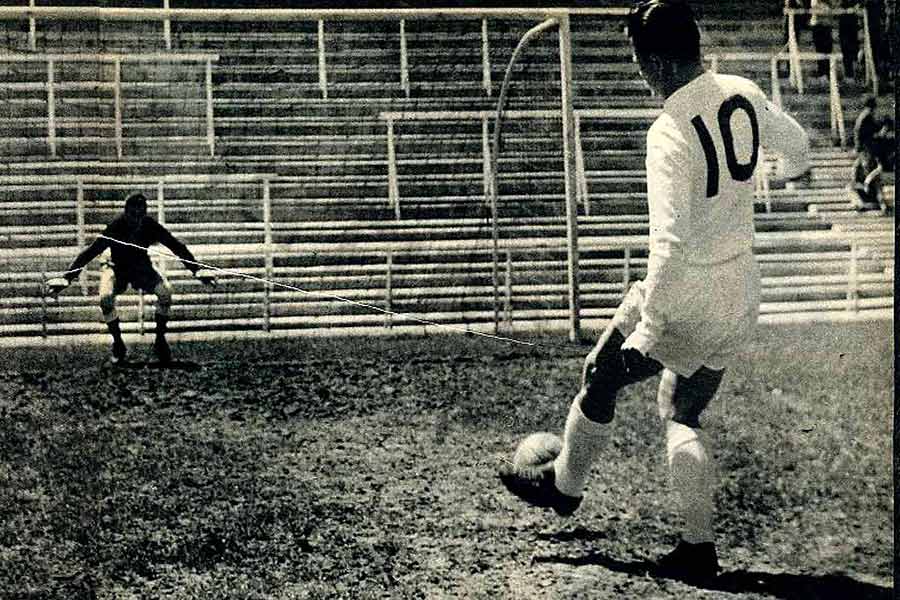
He scored so many goals during his playing days that FIFA created an award in his honor: the Puskas Award. The player who scores the best goal of the year wins this prestigious accolade.
In addition to winning numerous club-level honors, Puskas was part of the Hungary team that finished as runners-up at the 1954 World Cup. Puskas, one of the greatest players of his generation, passed away in 2006 but will always be remembered as one of the finest players to have ever worn the number 10 shirt.
Final Thoughts
In summary, understanding the role of the number 10 in football highlights its significance as a creative and strategic position on the field. Often tasked with linking midfield and attack, the number 10 player combines vision, technical skill, and tactical awareness to orchestrate plays and unlock defenses. This role demands more than just talent; it requires leadership, quick decision-making, and adaptability. Over time, the number 10 has evolved, taking on diverse responsibilities depending on team strategies. Despite these changes, the position remains iconic, celebrated for its impact and the legendary players who have mastered it. Whether as a playmaker, a goalscorer, or a team leader, the number 10 continues to embody the artistry and intelligence that define football's most magical moments.







